Keces S300+ Stereo HIFI Power Amplifier – Speaker Utopia Sound Master
Keces S300+ is a $3499 USD high-end flagship Stereo HIFI Power Amplifier, with both Balanced and Unbalanced inputs, High and Low Bias modes, and with a power consumption of up to 1000W, able to use Loop Triggers, designed to drive the beefiest, most picky of speakers out there. Today we will take a deep dive in the sound design and compare it to other high-end Power Amplifiers, including Cyrus One Cast (2000 USD), Burson Funk (550 USD), Jadis Orchestra Reference (4500 USD). With a Class A or AB, you know the S300+ will move any speaker driver, so we will also explore pairings with different DACs, and speakers, including pairings with NHT C3 (1249 USD), Amphion Argon 3s (3000 USD), KLH Model Five (2499 USD), and Buchard S400 (1800 USD). There have been some changes from the original S300, namely the Damping factor increased from 1500 to 4000, the internal materials have been upgraded, and the speaker terminals have been upgraded to WBT-0703Cu.
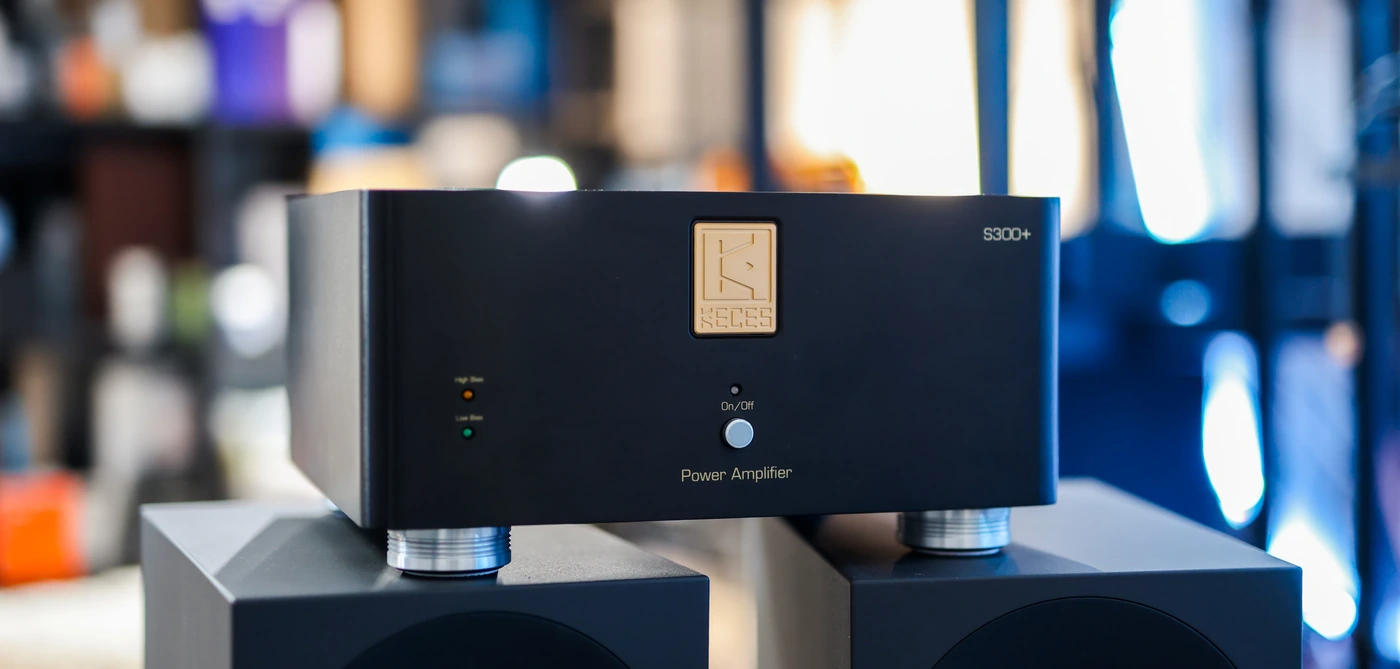
Introduction
Keces is one of the biggest producers of professional Audio Equipment from Taiwan, and they have a beefy selection of DACs, AMPs, Headphone Amplifiers, Phono Amplifiers, and more in their collection. They have expertise and build quality that’s generally better than products in the 10.000 USD+ price range, but they also have reliable units, and I never in my entire life have heard of anyone needing service for a Keces product. The Pier series of Ultra Low Noise Power Supply, and the Ultimate Series have found home in systems that use literally some of the most advanced speakers ever created, and Keces is generally a company you want to have products from. They are generally available for purchasing from dedicated shops in each country, and are represented through hifi sellers, rather than operating a direct shop. As an Amazon Influencer, I earn from qualifying purchases, and using the purchase links in my reviews helps me maintain this website and YouTube channel.
I’d like to thank Keces for providing the sample for this review, in exchange for my honest opinion. This review is a description of my personal experience.
Product Link
You can grab one from the official website here – https://www.kecesaudio.com/S300+.html
You can grab one from www.amazon.com here – https://amzn.to/3uyUtZy
If you’re in the UK, you can grab one from www.amazon.co.uk here – https://amzn.to/3witkuy
And if you’re from Europe, you can grab one from www.amazon.de here – https://amzn.to/3SW3Vzw
Build Quality/Aesthetics
The word “Tank” would describe something that is more fragile than Keces S300+ as this unit is one giant piece of metal assembled and put so well together that I would trust the K300+ to survive a nuclear war better than my entire home would. The unit is heavy, and taking photos and B-Rolls of it has been complicated, the packaging unit has 16 Kg of weight, and the unit itself weighs 14 KGs. The casing is fully made of Aluminum, and the part that is the heaviest ain’t even the casing on the outside, it is the internal power delivery. Starting with the Power, we have 130 Watts per Channel of continuous power, for an 8 OHM impedance, with the Maximum power at this impedance reaching 240 Watts per channel. The power delivery at 4 OHMs is much higher, at 225 Watts for the continuous output power, and the Maximum Output power being 300 Watts per channel for the 4 Ohm Impedance. There is a Bridge Mode situation in which you have 410 Watts of power for an impedance of 8 OHMs, enough for any pair of speakers.
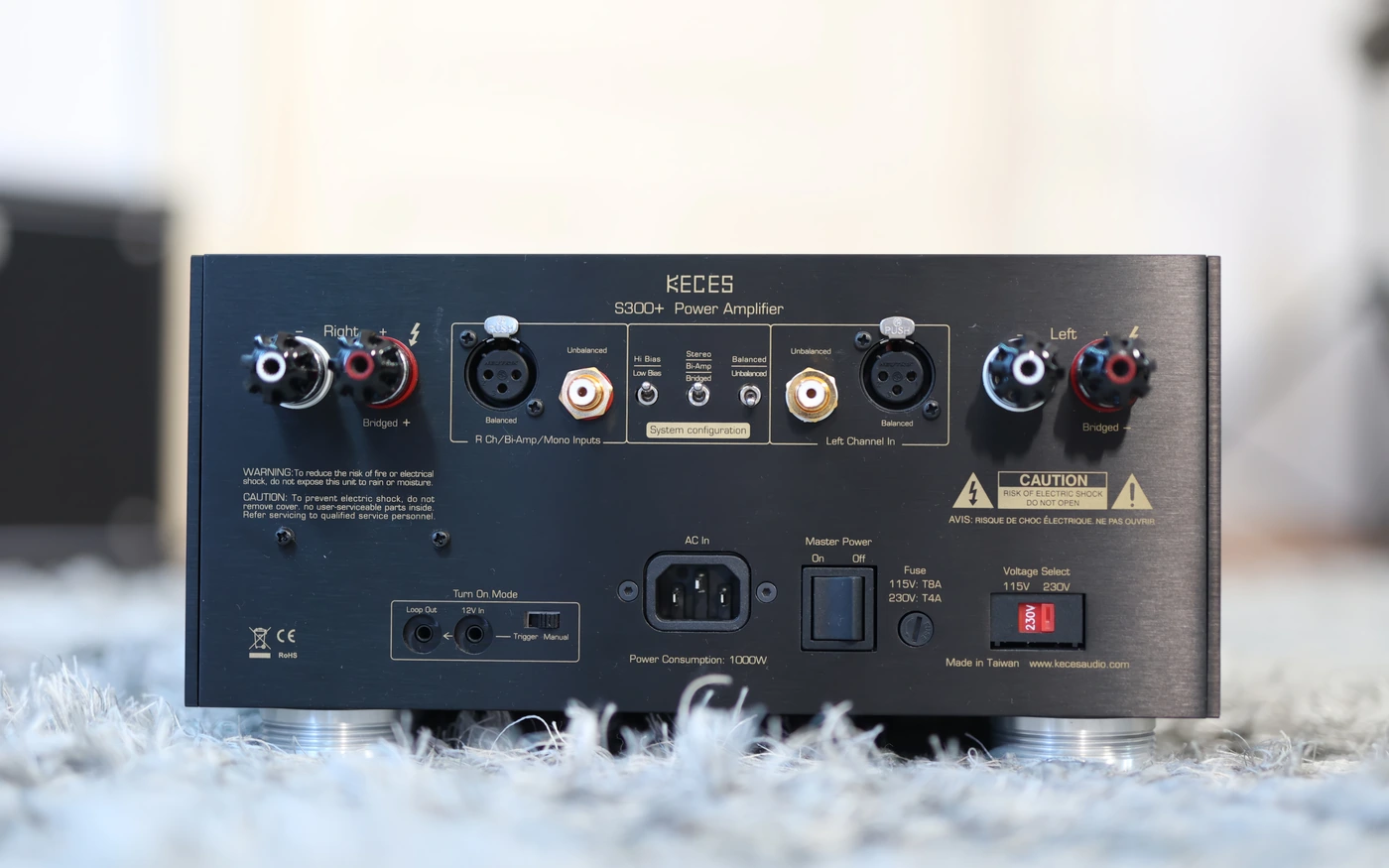
There is a 5 Watts per channel of pure Class A Power at the high bias setting, and we have High Bias Class A / AB operation. The peak current per channel reaches 45 Amperes. Something quite important for an amplifier so powerful, we have stable operation, even with speaker impedances that dip below 2 OHMs. You can select the operation between Stereo, Bi-Amplified and Bridged. The design is Dual Mono, which means that the whole amplifier is mirrored, and each channel gets an entire amplifier stage. The signal path has direct coupling, with no capacitors or inductors. The Bias Level is basically how much closer to Class A or Class B Keces S300+ is running. With Low bias, you get a lower drive level, but it runs cooler, consumes less power, and basically runs in Class AB mode, while high bias keeps all components running at all times, and keeps it in Class A. From subjective listening, it works great in both, but is cleaner, deeper and has better control in high Bias or Class A operation. This being said, it gets really hot, and consumes power regardless of the volume, so you can go for Low Bias to save some power and if you don’t notice a big difference in sound with your system.
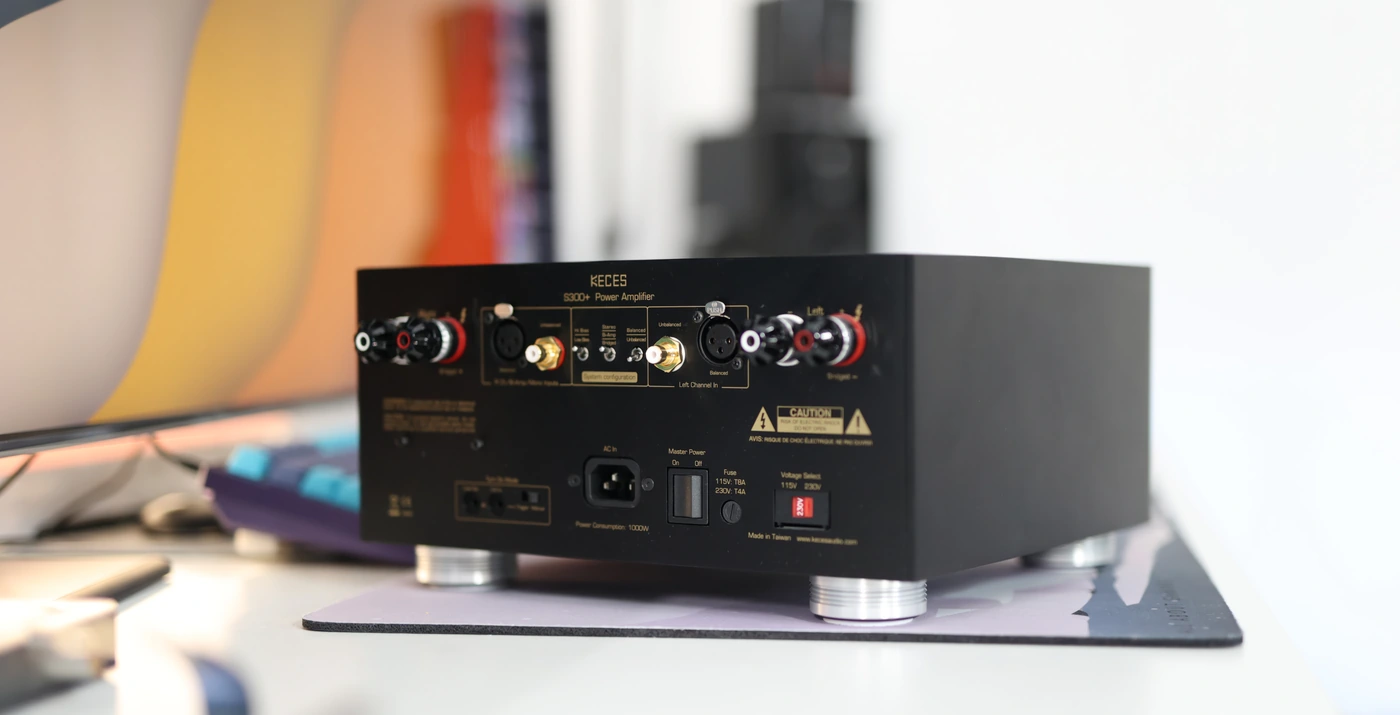
There are DC servo and relay protection circuits, to make sure you don’t get loud pops in your speakers, or a high rush current to break the amplifier. The input stage is JFET, while the driver stage is MOSFET. The transformer is even more impressive, with 1.2kVA of power, a huge toroid transformer with independent secondary windings for each channel. The power supply is dependent for the Left and the Right Channel for the input stage, driver stage, and the output stage, basically all power is fed independently, to keep the channel separation, and amplifier induced crossover to a minimum. You can still get loud pops if you turn on or off the DAC after the S300+, and I would recommend turning S300+ on after the DAC, and turning it off before the DAC, so that its protection circuits protect your speakers, and it doesn’t get fed a pop sound from the DAC turning on or off.

The filtering for the output stages is handled by 65.600 uF Rubycon capacitors. You can set the S300+ to automatically turn on with a 12V Trigger, and we have Neutrik Locking XLR input connectors. The RCA input jacks are heavy duty, gold plated with 24K Gold. The biding posts are also heavy duty and plated with 24K gold. There is a strong AC turn-on inrush surge protection, and Keces implemented both overload and Over Temperature protection, although I have to admit I had a really hard time ever reaching either, the cooling is more than adequate, and I don’t have anything I can drive loud enough to run into an overload issue, problems I faced in the past with most amplifiers for Stereo systems, including Cyrus One Cast, Burson Funk and Jadis Orchestra. With Keces S300+ you don’t have to worry about EMI or RFI Interference, as those do not reach the amplifier, it has a 4mm aluminum casing that will protect it from them.
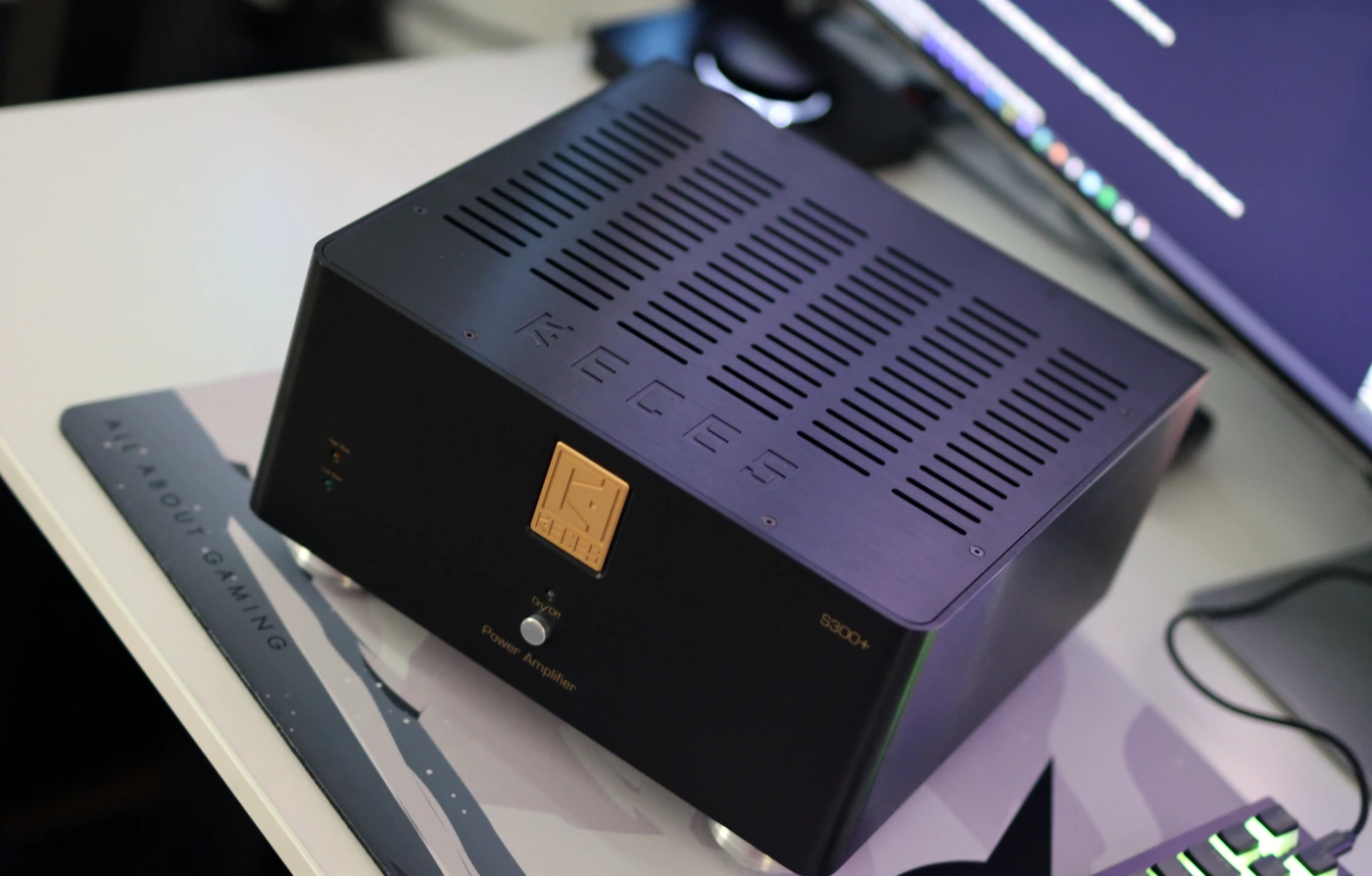
The full bandwidth response of the amplifier is 5 Hz – 160 kHz for a 3dB of margin, and the 10 Hz – 20 kHz we have a 0.1dB precision, which is perfect. The THD+N is <0.04% for the full power delivery, and <0.004% for a 60 Watts load. This is lower than most amplifiers have regardless of the class, and it is interesting to see Keces reaching those. Keeping in mind that the SNR is 110dB for an IHBF A-weighted signal, and 101dB for an unweighted signal. The gain is noted to be 26dB, and the input sensitivity is 1.6V for the Single Ended input, and 0.8V per leg for the Balanced input. The Damping factor is 4000 at 20 Hz,. and the Standby consumption is 0.5 Watts, but can reach at maximum 1000 Watts. With a full aluminum casing, the 300x279x133mm unit looks tank-ish, and feels incredibly sturdy.
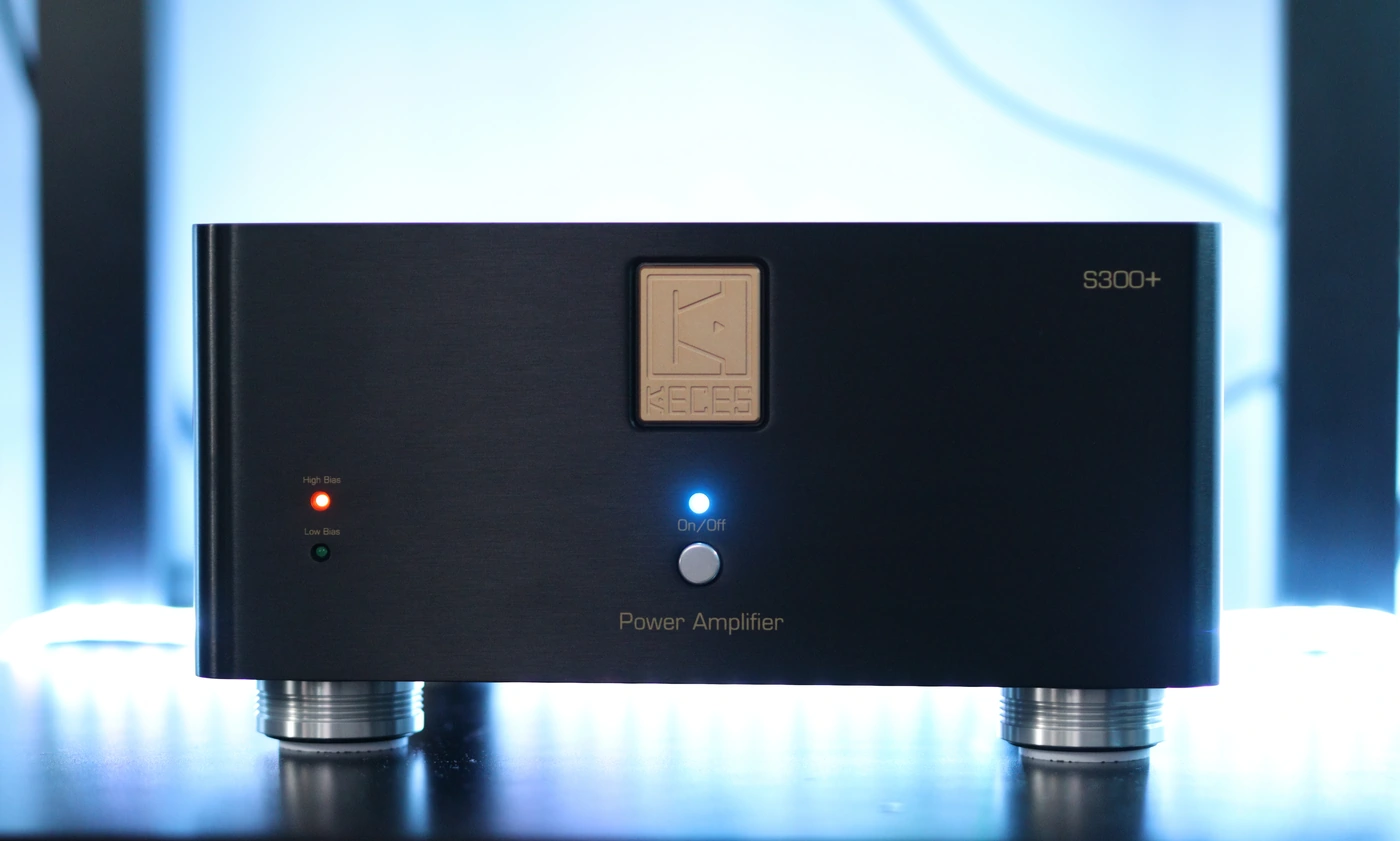
In actual usage, the unit is quite ideal, there is no inherent noise if no input is connected, you can place the router on top of S300+, and you won’t hear any interference. The unit also does get quite warm during usage, even hot at times, but I did not manage to run into overheating or overdrive issues, even if the room temperature was 32C and the unit was running extremely loud volumes. The volume is controlled solely from the DAC or the Preamplifier, and it needs to have a qualitative and quiet volume control for the final result to sound good, as S300+ is always running at max gain. This should not be confused with max power, the louder the volume, the more power it will draw, but it does not have volume control, so it always applies a 26 dB gain to the input signal. In theory, this should have the best sonic quality, as there is literally no potentiometer to affect the sound, but it also means that S300+ is extremely sensitive to the source quality. While you may expect this to be evident, I need to mention that to properly drive a pair of speakers, having enough power matters for both the bass driver, but for the treble driver too. This is because there is a crossover inside each speaker, and that only gives a certain portion of the power to the treble drivers, so feeding more and better power to the crossover, and subsequently to both the treble and the bass drivers will improve the sound in general, not just the bass or just the treble, everything becomes more punchy, more vivid, more open and impactful.
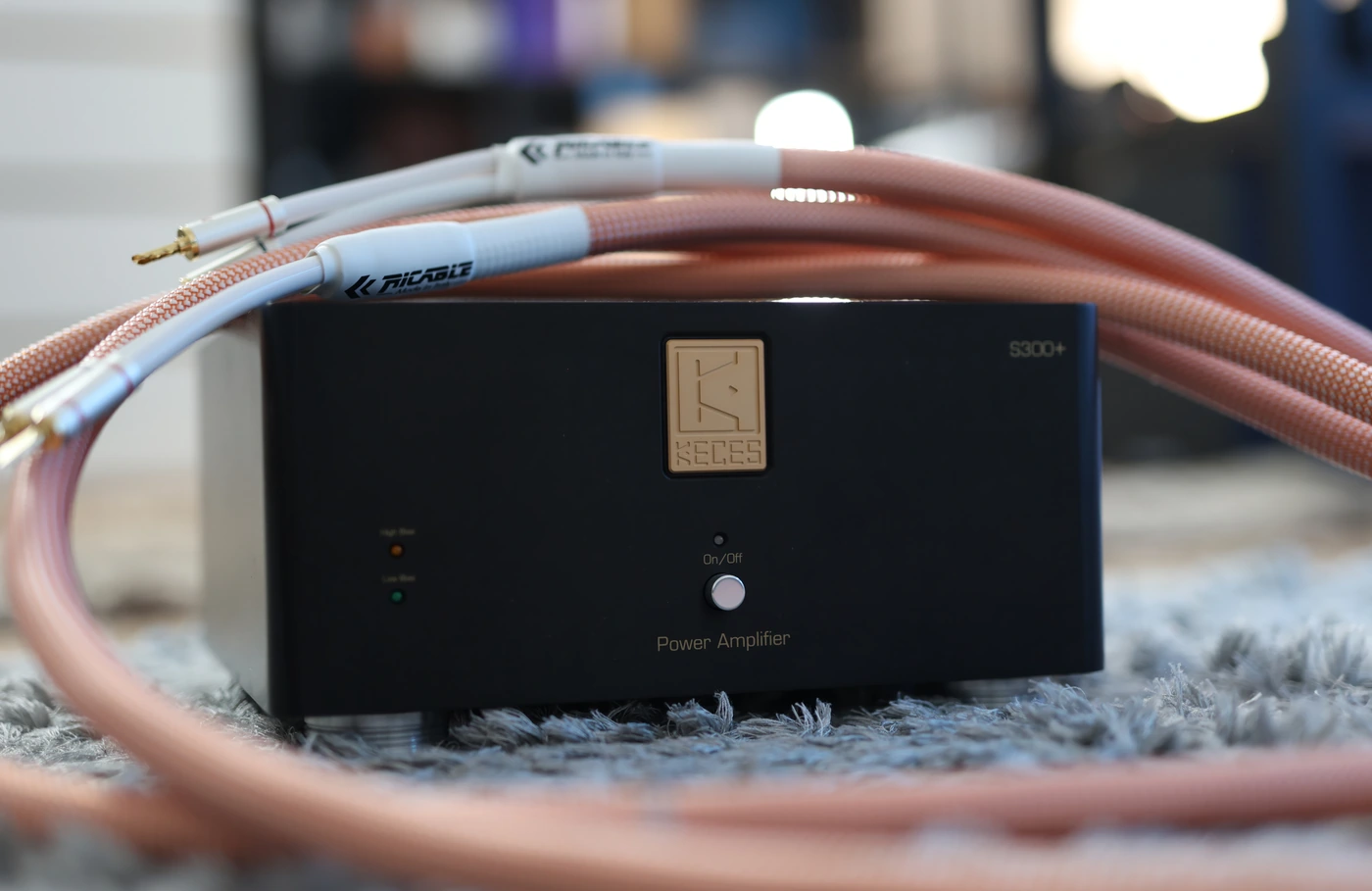
I found that most DACs in my collection have a level of background noise that you will hear, even on the XLR output, and very few are truly silent, and can safely be paired with S300+. The most silent of them all being Aune S9C PRO, a true champion of quality, resolution and silent backgrounds. You cannot use a DAC like HIFIMAN EF600, as it has no volume control and you would need a preamplifier, situation in which you would increase the noise levels too, and EF600 has a bit of audible background noise for the DAC output that will be audible with S300+, situation in which a PRE will add its own background noise too. A new love that I found just while writing this review is HIFIMAN Golden Wave Serenade, as it is not just silent, but has outstanding control with Keces S300+.
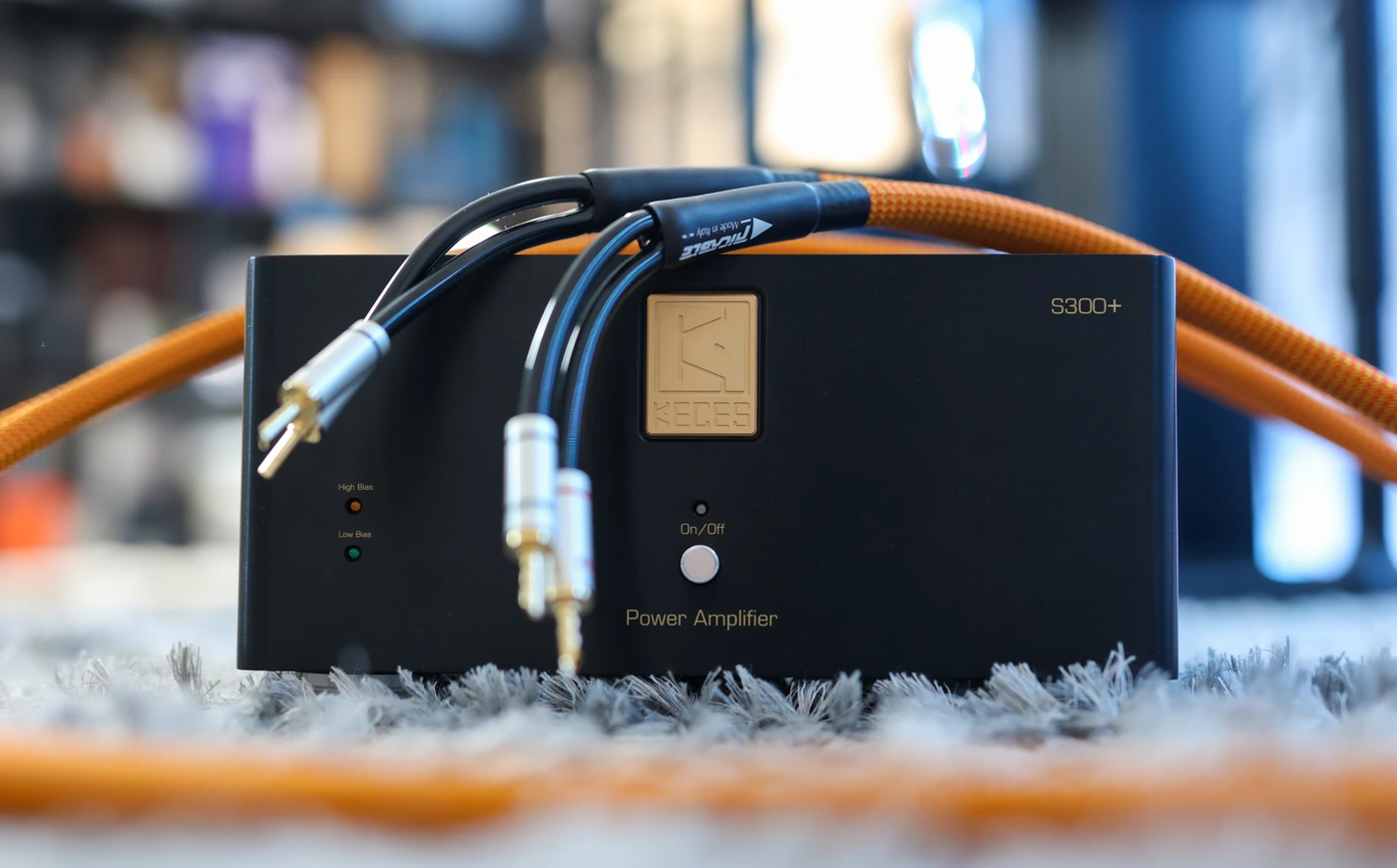
Keces S3 is perfectly silent when used as a DAC to power the S300+, and although it is a unit I reviewed quite a while ago, it handles S300+ really well, and they look super neat together. I would place S300+ and S3 next to each other and not stacked, to keep both cool and allow for airflow through them. Audio Analogue AAdac is also fully silent in the background and offers a superb sound with S300+, with no background noise. The noise is controlled with FiiO K9 PRO ESS, which is mostly silent, but it is sensitive to which USB port I am using, so there is a bit of a grounding issue, and the same happens with SMSL DO400. xDuoo TA-84 has a high background noise due to the way the tubes are implemented, and I would not recommend a Tube based DAC / PRE, unless we’re talking about the Qualiton APR204, which does not have any background noise at all.
Sound Quality
The collection of speakers I’ve used to review the Keces S300+ includes NHT C3, KLH Model Five and Buchardt S400. I have tried adding the Aperion Audio RST MKII, a pair of super tweeters to most setups, and this reveals a lot more details from the sound, but it also increases the impedance, it cleans the sound a bit, but does not change the tuning, as S300+ responds as well as you’d expect to different impedance ranges. This is super interesting to my ears, as I’m finally able to get a sound that’s stable across all speakers, most amplifiers failing to deliver the same sonics with high and low impedance loads. The best pairing I would say is with KLH Model Five, where S300+ puts a strong punch into them, but controls them neatly, keeps the bass tight, punchy and extended nicely in the low-end. I found a surprisingly neat presentation with NHT C3 too, they are revealing, but usually lack life and punchy, S300+ adding a lot of those to the sound of an already interesting speaker set. When it comes to how passive speakers move, their drivers are most of the time capable of reproducing a superb sound, if you power them adequately, and S300+ will make any speaker move, from the smallest bookshelf speaker, to the biggest, hardest to drive ones out there. The DAC I have used for most of the sonic impressions is HIFIMAN x Golden Wave Serenade.
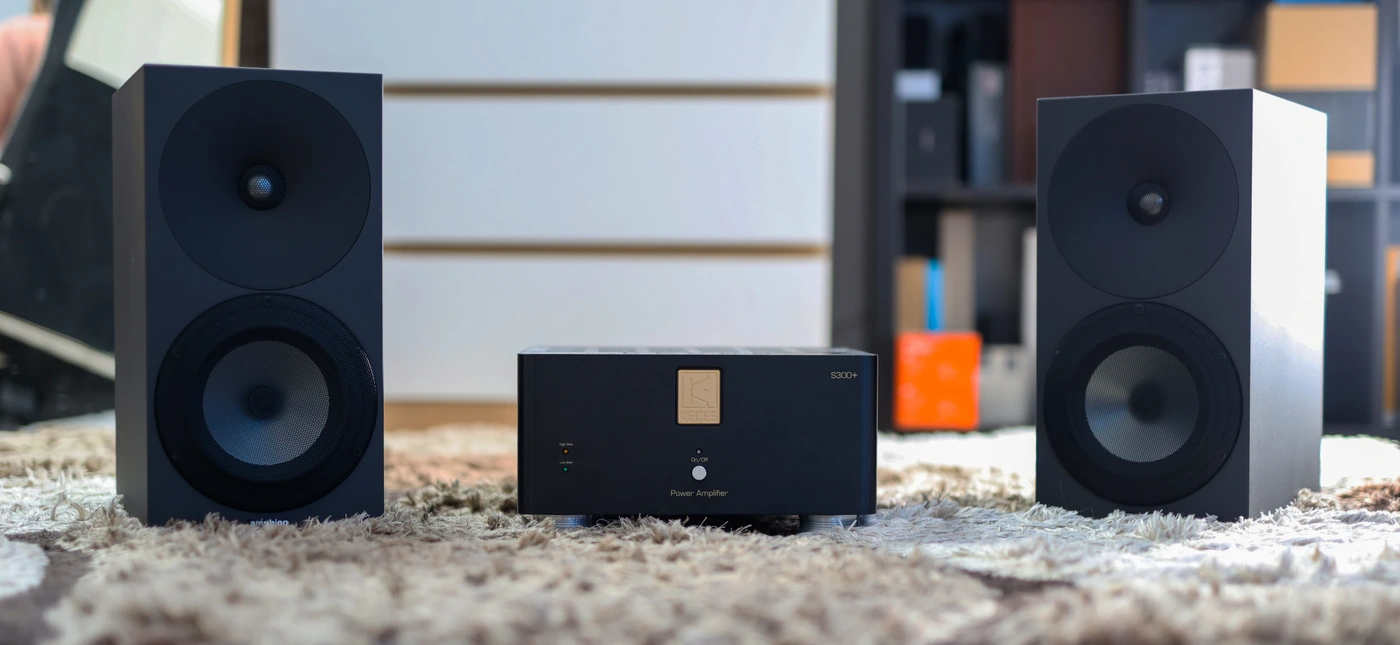
The overall sound of the S300+ is clean, detailed, but inherits all of the characteristics of the DAC, passing them through, being transparent and having what I would call ultimate resolution, clarity and detail. Before I got to a combination that I liked, and especially because most DACs have huge noise levels over the DAC line out, I haven’t been able to properly gauge just how much of a difference a high-end amplifier can make in a system, but even with the most affordable passive speakers that I have, the sound opened up to the levels that high-end audiophile systems have, without anything else but the amplifier being the driving force behind them. Keces S300+ has the widest, most holographic soundstage I’ve ever heard in an amplifier, and it can make NHT C3 project music and effects in ways they sound like they’re coming from outside the room. The instrument separation is just top notch too, and you have every single instrument playing with actual weight and impact, substance and volume. I keep returning to my review exploring the Dekoni Cobalt headphones where I discovered just how important it is to test a product at all volume levels, so it is worthy to mention that Keces S300+ sounds perfect at all volume levels. It is controlled, dynamic, detailed, crisp and punchy at ultra-low volumes, with no background noise, but a beautiful, musical midrange, crisp treble, and punchy bass. It becomes more engaging and more vivid at medium volumes, but stays just as detailed and controlled, and at high volumes it is a speaker that can turn two mere bookshelf speakers into true PA agents that can entertain a group of more than thirty people just fine.
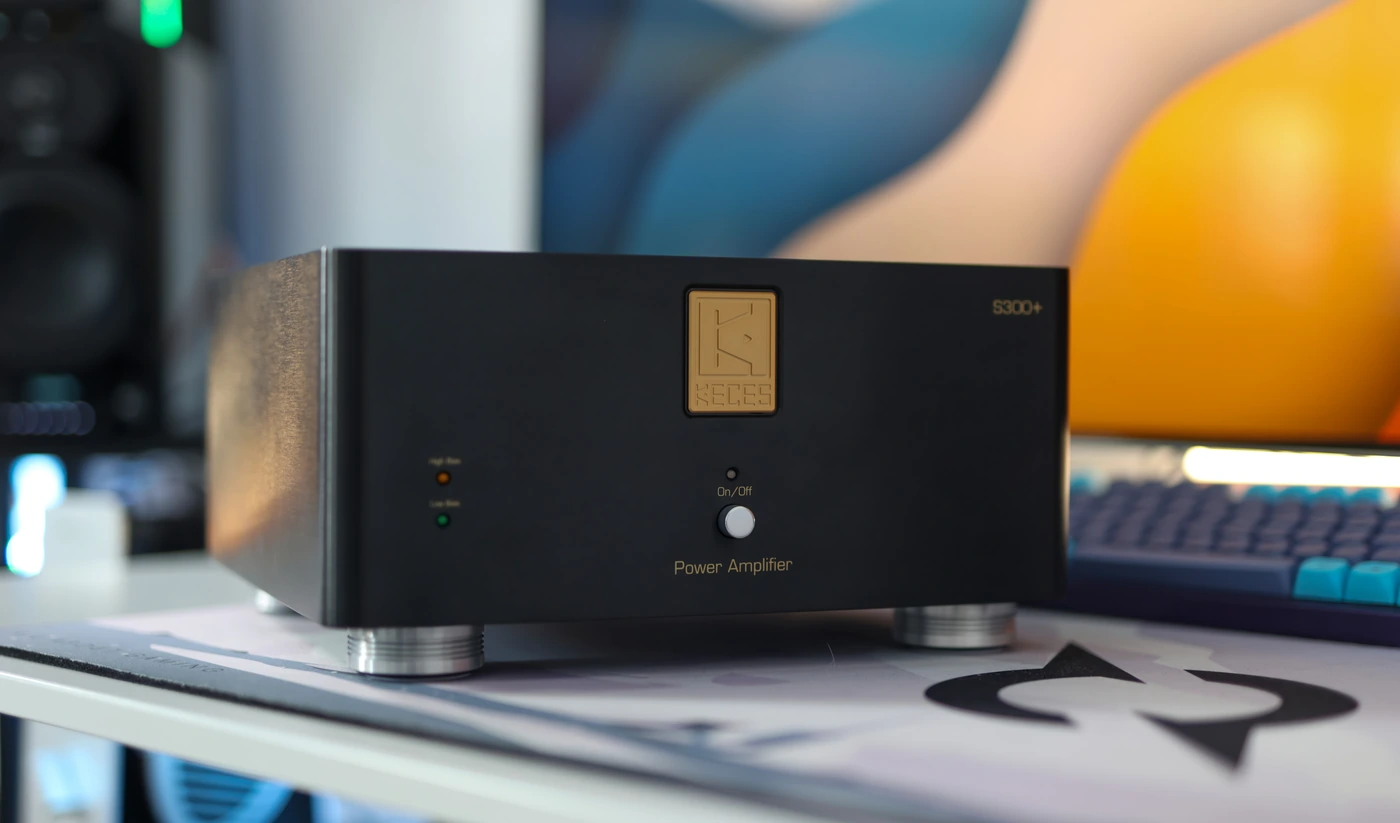
The bass of Keces S300+ made me have a revelation. I almost always felt like I needed a subwoofer, using the Adam Audio T10S, but with Keces S300+ I get such a satisfying low-end reach and impact that even with bookshelf speakers I actually prefer the sound with no Subwoofer. The trick is that Keces S300+ has a lightning-fast bass reproduction, no sloppiness, but it can move high amounts of bass in insanely fast short periods of time, especially on the High Bias mode, so you’ll get more than enough extension, punch, your stomach won’t be able to handle the impact at high volumes. Even at low volume, there is a rich nuance, exceptional control and a punchy impact coming from all the speakers I paired with Keces S300+. With both KLH Model Five and NHT C3, songs like Jake Daniels – Just a Little Bit have a full, fast, and rounded low-end, with a tight bass control, but long decays, as the producer intended. If you want to test the limits of speed for an Amplifier and when does it turn sloppy and lazy, songs like Rings Of Saturn – Peeling Arteries, where the drum patterns are so quick, most speakers paired with most amplifiers sound like a mush of sounds, while Keces S300+ sounds clean, sharp, detailed, and can provide a clear sound for each drum note. While the drums have a sound that needs all frequencies reproduced equally well to sound crisp, the bass part is the most important for drums to sound authentic and natural, Keces S300+ giving you exactly this, while subwoofers like Adam Audio T10S actually makes the sound sloppy and scattered if added to the speedy pairing of Keces S300+ and basically any speaker out there. Drums are presented fast, accurate and crisp by S300+ with songs like Lucrecia – Sleeping Slaves Of Fate, where you hear each pedal hit, every premier, and every single cymbal crash, with the full range expression they’re supposed to have.
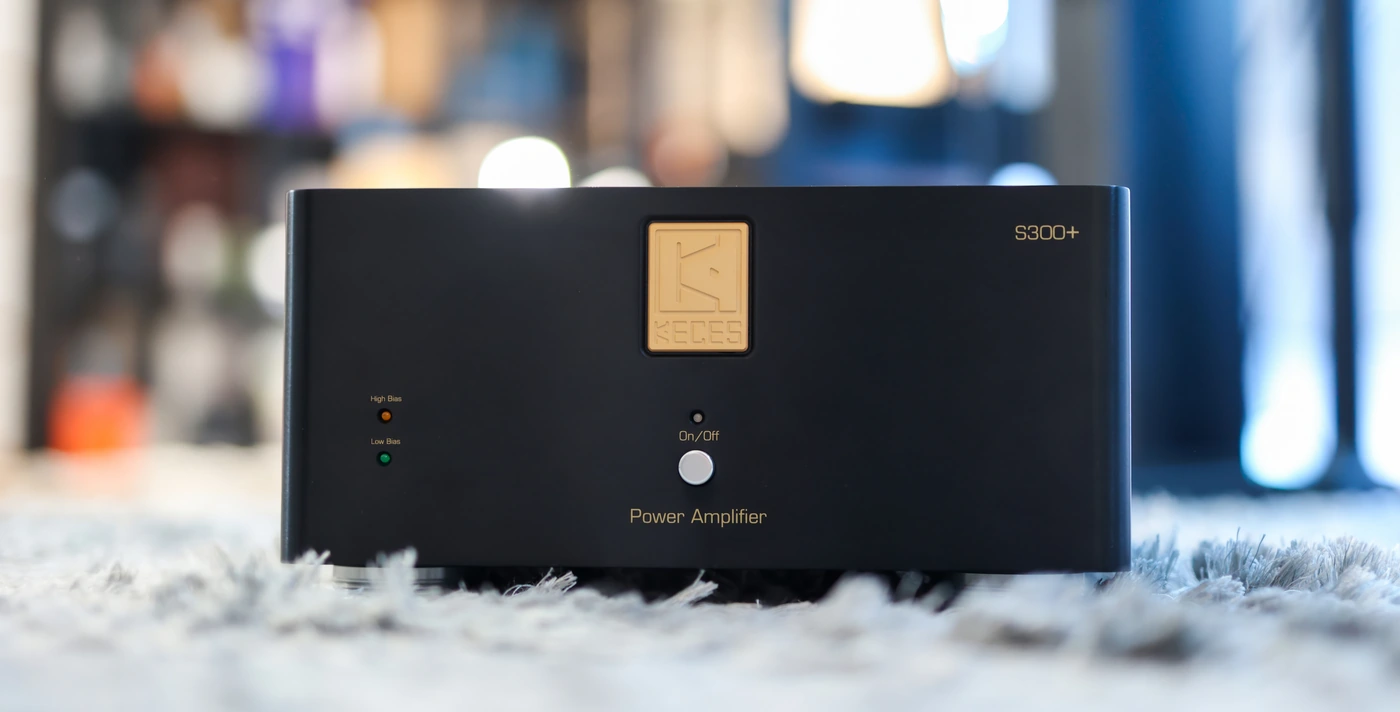
Keces S300+ doesn’t have any coloration to its sound, being perfectly transparent, so you can expect the sound to have a perfect timbre and tonality for the midrange, with no emphasis on the lower or the higher mids, but rather a purist approach, where NHT C3 paired with S300+ will be more accurate than Adam Audio S3V (thankfully I could test this comparison with the help of a friend too), with better transparency, vocal clarity and a more accurate reproduction of the original song. In very busy songs, which have guitar notes played above voices and complex drum patterns, S300+ will separate those and present each individually with ease, reveal what a quick yet natural transient response it has, showing you everything the song has to offer, like a live experience where you can see the guitarist plucking the strings right in front of you. Keces S300+ emphasizes the space between instruments, throwing the sonic scape out of boundaries, it pushes instruments to sound as if they’re coming from far outside of your room, but keeps things neatly separated and not scattered, but really wide and holographic. For the past couple of reviews I wrote, I haven’t been impressed with the soundstage size, but Keces S300+ changes everything, I can finally call something truly holographic and huge sounding.
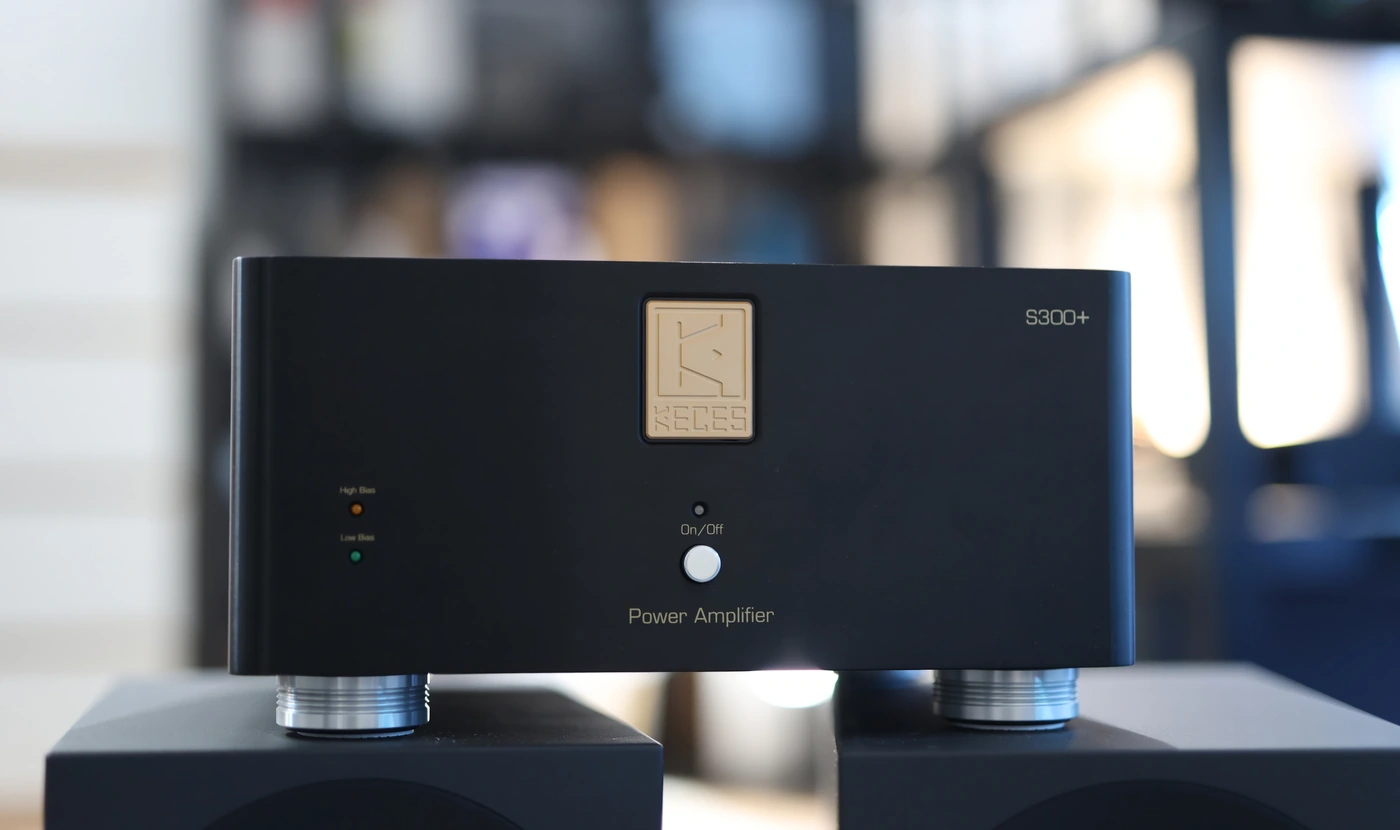
The actual timbre and realism S300+ can infuse into music is frightening, most amplifiers can’t move either Model Five or NHT C3 fast and accurately enough to reproduce the texture of a violin, acoustic guitar, or flute, but S300+ smirks as it shows how easily it can reproduce orchestral music, even with multiple artists playing the same instrument at the same time, songs like Haggard – Chapter I – Tales Of Ithiria sounding as if the whole band is playing all around me, each instrument having its own unique space, precise location, but also accurate texture, timbre and realistic weight to the sound. Songs like Sonata Arctica – Fly With The Black Swan are complicated to handle too, because it has a lot of effects layered, acoustic instruments blended with the electric guitars, and S300+ helps present those well separated, you can hear each guitar note separate from the voice, bass notes clearly audible all throughout the song, and the cymbals are clean, crisp, but not harsh or fatiguing, brilliant in presentation. Testing the S300+ with Falling in Reverse – The Drug In Me Is You, we have a clean, that super quick drum set played in the background, left zone, behind the lead guitar and the rhythm guitar, with the voice being forward, right in your face, but the guitars playing harmonically together, in both sides of the scene. The voice tonality is perfect and if you had the luck of hearing the band live, S300+ reproduces every voice I’ve heard so far perfectly and with utmost accuracy.
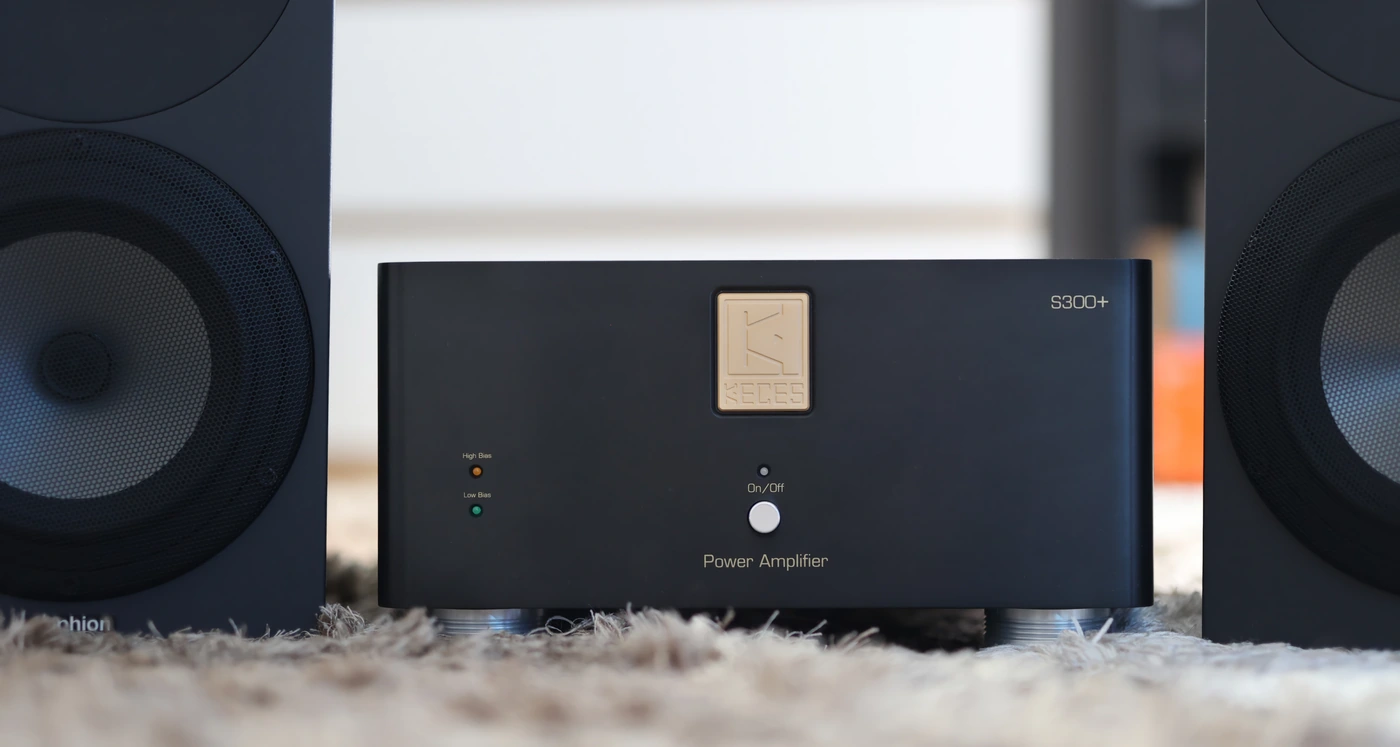
The treble is the part where Keces S300+ obliterated everything I heard before, regardless of the price range. It is very easy for a large amplifier to overdo the treble, either smooth it out, roll off, be bright, or have huge distortions and expect the listener to not hear those. To test the limits of S300+, I have added the Aperion Audio RST MKII Super tweeters to almost each test, as those super tweeters will show any trace of background noise, and to my surprise, S300+ has absolutely no noise. But what’s more, the treble it reproduces sounds refined, can extend easily up to over 20 kHz, it creates air, nuance and space in the high-end, and music always has perfect dynamics when presented by S300+. You can test the dynamic range limits with both music which is dynamically compressed to the maximum, like Metallica’s St Anger album, or with classical music which is not compressed at all, as you’ll see if the amplifier applies any compression. One of the most compressed songs I have to test is One Morning Left – BD_L3FTOVERZ, where S300+ shows a good distortion between guitars, voices and cymbal crashes, and although it reveals the compression artifacts quite clearly, it doesn’t force them onto you, and the transient response being super quick, you actually can enjoy the song greatly, hearing good detail and resolution. With more recent songs from the band, like Reetu Inda House, there is a good sense of space, soundstage width and depth, and despite the song still being extremely compressed dynamically, S300+ makes a true metal performance out it, much closer to a live concert, where the drums play focused in the front of the listener, guitars latertally, and widely spread apart, and the voices coming from behind the guitars, placing everything with pinpoint accuracy.
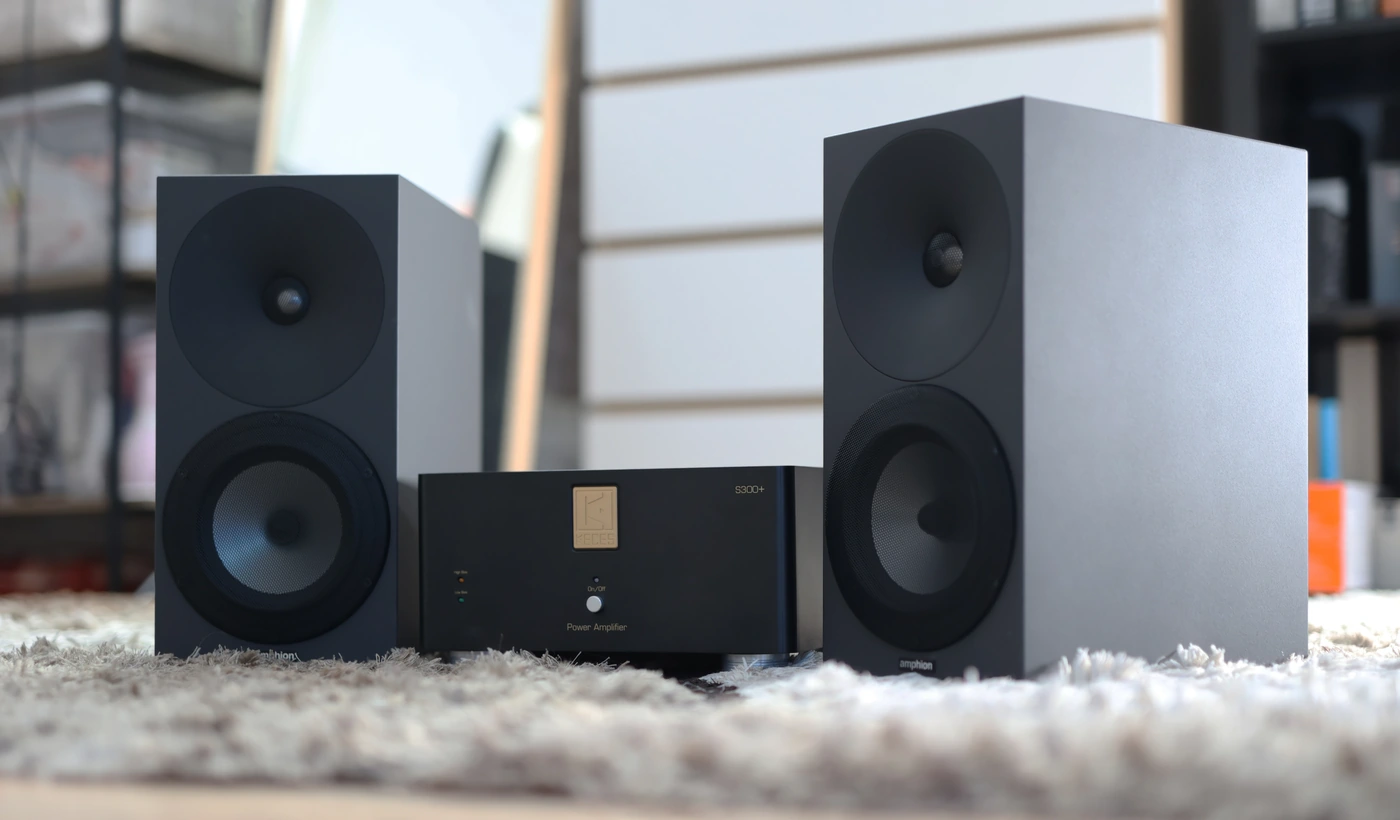
For rock and metal which is not dynamically compressed, we have La Dispute – St. Paul Missionary Baptist Church Blues, a song which has huge dynamic range, and where S300+ projects a thick and nuanced bassline, with every bass guitar pluck resonating all through the room, a clear but shy cymbal playing in the left part of the room, the song happening all around the room with no bounds, and with the voice being present all through the frontal part of the soundstage. Despite me listening using two stereo speakers, many effects sound as if they’re coming from behind me, especially the rhythm guitar and the special effects keys, the magic of a good amplifier never ending. The Lead guitar in this song is always a bit louder than the rest of the band, and it shines effectively separated from the rest of the song, leading your mind to the emotion and feeling of the song. The best part is how enjoyable the drum set is, despite it being played slow and in a slightly tortured way, to match the sadder song structure, it just has that satisfying punch for each note.
Comparisons
Keces S300+ vs Jadis Orchestra Reference (3499 USD vs 4500 USD)
The shape of the Jadis Orchestra Reference sure is impressive, and although it is also an amplifier, it does have volume control, and a lot of tubes, being a work of art and a beautiful unit by all my standards, impresses me every single time I see it. There is no balanced input on the Jads, while there is a balanced input on the Keces S300+, and you can be sure S300+ will not cost anything down the road, while Jadis Orchestra Reference eats through tubes like candy, and you will keep spending money to keep it playing. While Keces S300+ does not have any kind of self noise, even placed right above my wifi router beneath my computer, above a subwoofer, and with many other electronics plugged in the same outlet, it has zero noise. Jadis Orchestra reference has a ton of self noise that you can hear in the background, which is present even with no DACs connected, while S300+ will only amplify what you’re feeding it, and a dac like HIFIMAN serenade can be perfectly silent with it.
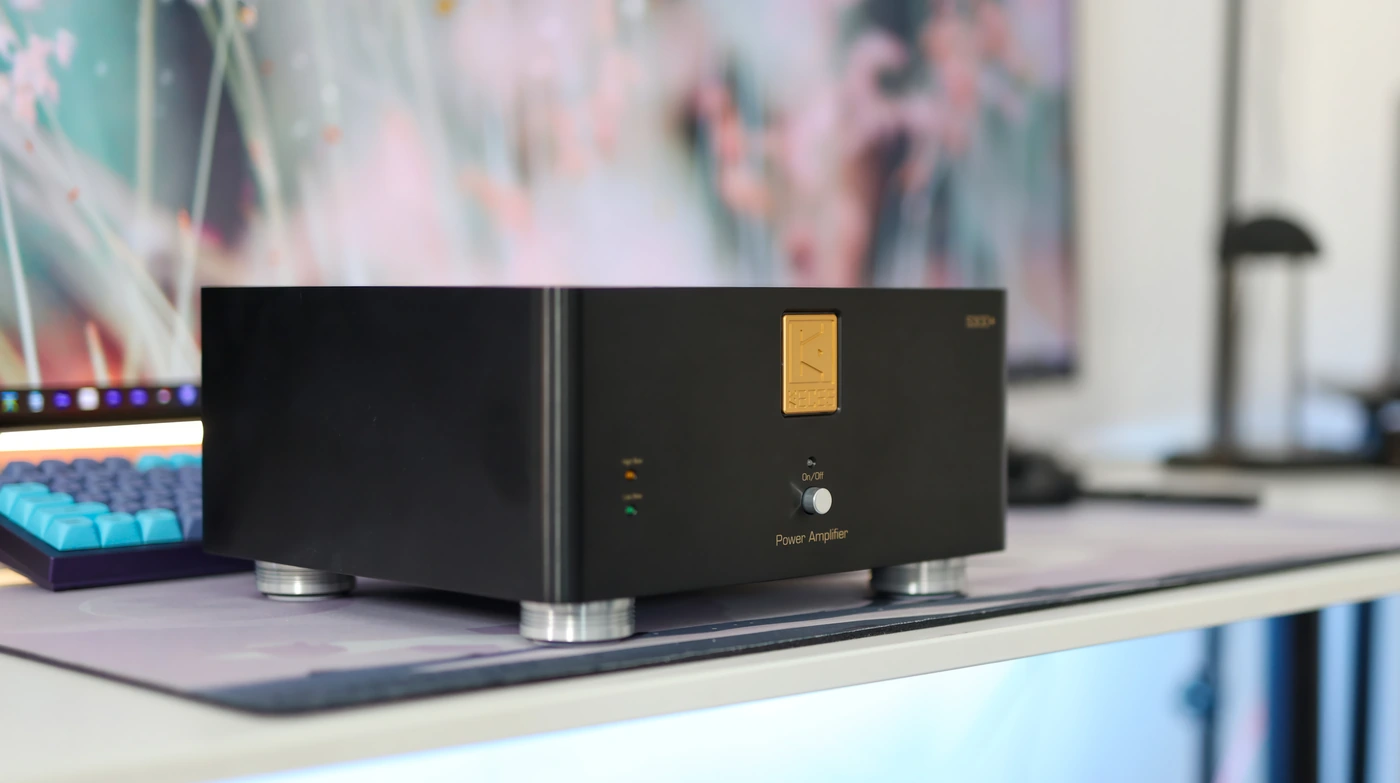
Sonically, S300+ wins in literally every aspect, from how deep the bass can go, how full the bass can be, and how adequately Keces S300+ can power any speakers so that the bass drivers really will move. The midrange of Jadis Orchestra Reference has that specific tube magic, which makes them sound really organic and pleasing, with a slower, slightly overdriven transient response, and with a more intimate soundstage, but Keces S300+ comes in with the excellent clarity, huge soundstage, and holographic presentation, making music sound more natural, expand wider, deeper, and with much better instrument separation, and with a much lower distortion level and with none of that overdriven character we Jadis Orchestra Reference is known for, S300+ sounds like a full upgrade from it in resolution. The treble is pretty clean on both, although I prefer the treble on the S300+, it is sharper, extends better in the highest registers and with a lower perceived distortion, while Orchestra Lite can sound quite blurry up at the top.
Between the two, I would always pick the Keces s300+, it is more affordable, better built, has no additional costs, and sounds much better than Jadis Orchestra Lite in the driving power departments, but also in resolution, clarity and punchiness. Although S300+ does not bring in any tube distortion and associated signature, it does bring in exceptional control, clarity, and is more enjoyable for all music styles, especially thanks to the much wider, deeper soundstage and better instrument separation.
Keces S300+ vs Burson Funk (3499 USD vs 550 USD)
Although the comparison is hubris from the design, it is good to know why you’d invest 7 times more money on a device, when you can get a headphone amplifier, volume control and a speaker amplifier for 550 USD. Funk is a much smaller unit, with a headphone amplifier that is in Class A, but a speaker amplifier which runs in Class AB. The effective usage scenario of the Funk is higher, it even has volume control, and is smaller, more practical to have in your room, even desk, than S300+ which is a huge tank-ish device that is heavy. The maximum driving power is comedic to compare as Funk has 45 Watts of Class AB power at maximum, nowhere near enough to adequately power either full sized tower speakers, or bookshelf speakers, S300+ on the other hand being more than enough for both. Burson Funk is a great way to get started with music and audio and not feel left behind, while S300+ is an amplifier to drive every speaker out there.
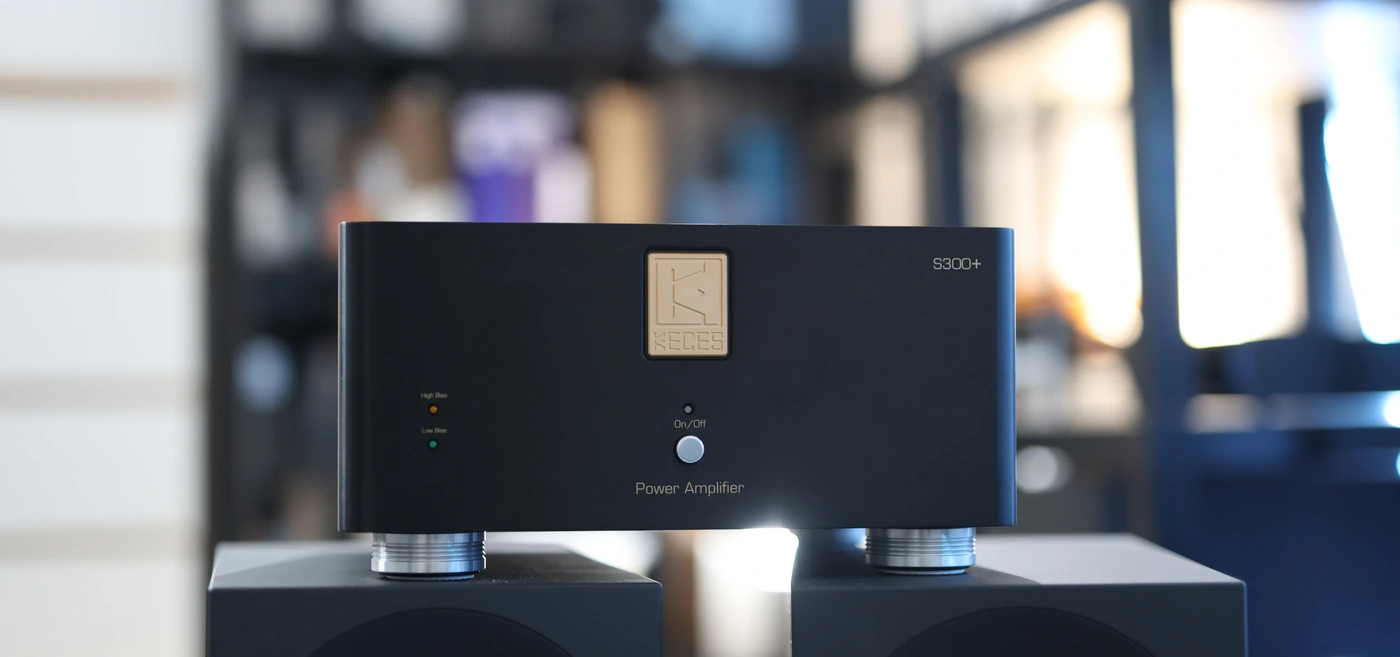
Sonically, they are quite different, with S300+ sounding far cleaner, more detailed, having better dynamics, resolution and being far more transparent than Funk. Burson Funk sounds warmer, having a simpler, basic sound, with a more intimate soundstage, less emphasis on space and definition of each instrument, while S300+ has a really delightful presentation that expands your music, projects it beyond the confines of your walls, and gives it a clarity that makes an entry-level amplifier like Funk sound veiled and limited in comparison. You have to read my review of the Funk to understand that it is not a bad unit, but S300+ is just so much better, this time the difference in price being reflected in the difference in performance, rather than it being a case of diminishing returns.
Between the two, if you can afford the S300+, I highly recommend going for it, you won’t regret, but you will get a superb sound, driving power for everything, and exceptional control for your speakers, plus a holographic soundstage, while with Burson Funk you can start the journey and get into audio, but will miss on the magic a proper amplifier can deliver even with some minimalist bookshelf speakers.
Keces S300+ vs Cyrus One Cast (3499 USD vs 2000 USD)
Things start to get more interesting as I’ve used One Cast for so long that I know it inside-out, what it can do, what it can’t do, and just by looking at it, it has more design elements, a remote, and volume control, streaming, and a headphone output which is capable. This being said, for driving speakers, One Cast is just Class D, and you hear that in the driving power it has, as it sounds limited, much smaller and intimate compared to S300+, which is far wider, more holographic, more open and cleaner sounding. The actual driving power of One Cast has been the reference I’ve used for most of my reviews, and it was a mighty time something came along and replaced it entirely. The chassis of the S300+ is far more solid, cleaner, and it has way less interference. In fact, Cyrus One cast will have a random hiccup once in a while where it beeps loudly, and I have to plug it out and leave it unplugged for a few hours for this to stop. One Cast has an integrated DAC, so for the money paid, you’re getting far more than a speaker amplifier, and at times the speaker amplifier feels a bit like an afterthought, but then the DAC performance is not as good as a 500 USD DAC like JDS Labs Element III MK2 Boosted, and the headphone output is rather excellent, but it is a bit too pricey and too heavy, with the likes of Aune S17 PRO sounding better as standalone headphone amplifiers. At any rate, this is not a rant against Cyrus One Cast in any way, it is still an excellent device, and Keces S300+ won’t win a beauty contest against it, S300+ feels and looks like a big tank, it is thick, tall, heavy, wide and has a very simple design with just 3 switches, while Cyrus One Cast does everything you need in the audio part of your setup.
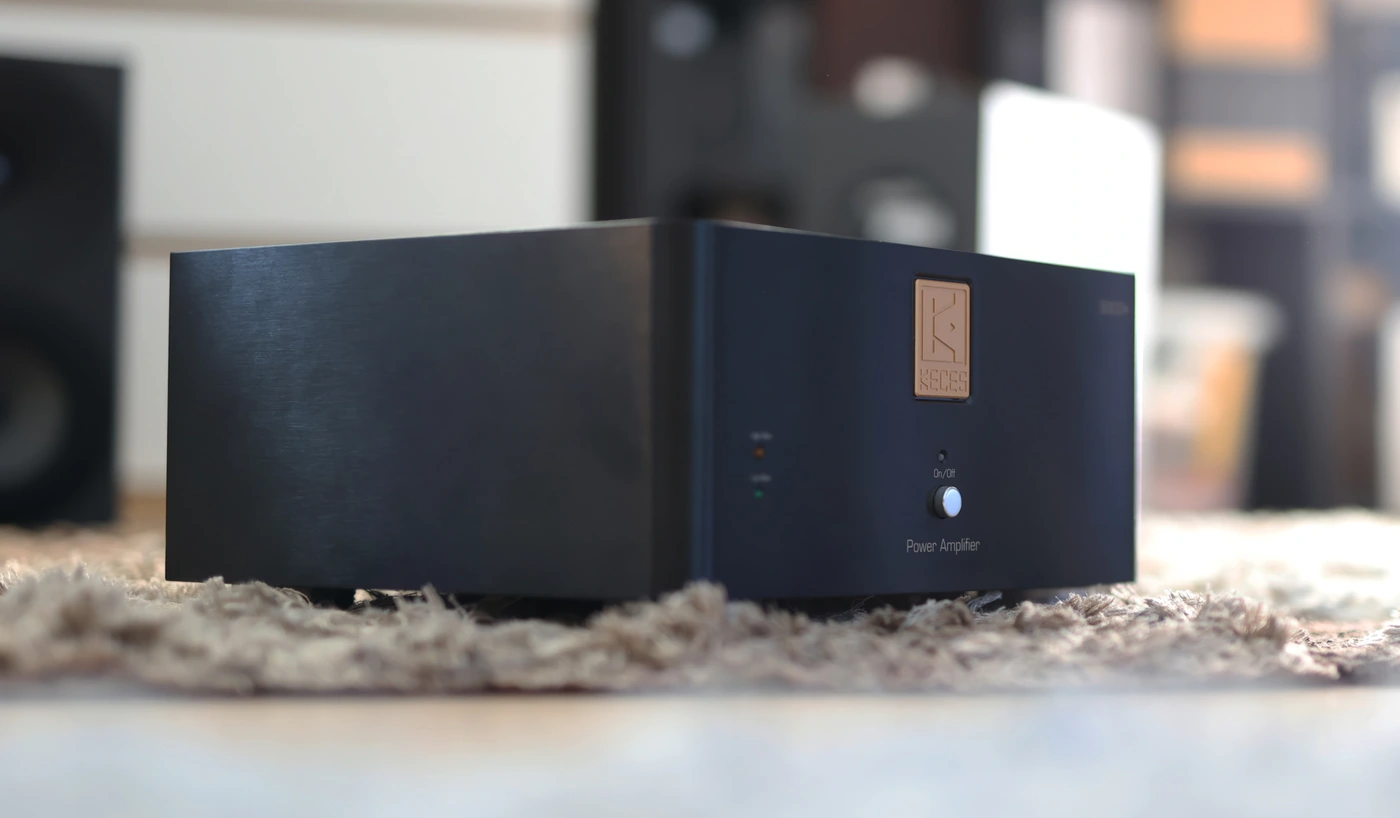
Sonically though, if you’re using both to drive a pair of speakers, Keces S300+ sounds far more controlled, more dynamic and punchy, the bass is both tighter, and has a better punch, the treble is more crisp and airy, extends more in the upper registers, and the midrange is sweeter, much wider, more vivid and just more fun to listen to. The biggest difference is in how much better S300+ is at powering all speakers, and at first I couldn’t believe just how much better a pair of easy-to-drive bookshelf speakers can sound when properly powered, and with larger floorstanding or hybrid speakers, it is a whole new chapter, so KLH Model five is in another world of dynamics and resolution when driven by Keces S300+ versus Cyrus One Cast. The Class D Amplifier of One Cast has some background noise, and especially when adding the Aperion Audio RST Ribbon Super Tweeters you hear the self noise of the Cyrus One Cast, which has a certain background electronic noise at all times, even with no DAC connected. Especially with a DAC that has some noise, if the DAC doesn’t have volume control, One Cast will amplify both its noise and the noise of the DAC, while with S300+, it is running at max volume at all times, and will require a DAC with PRE function, or a Preamplifier in between.
Here, the choice is pretty straightforward, Keces S300+ is a much better speaker amplifier, regardless of the speakers type and size, but it is pricier, and Cyrus One Cast is more versatile. If you need an all-in-one go for Cyrus One Cast, while if you can afford a more interesting setup, go for Keces S300+, HIFIMAN Golden Wave Serenade, and any pair of speakers of your liking.
Pairings
Keces S300+ & Buchardt S400 (3499 USD + 1800 USD) – S400 is a speaker I reviewed in the past, but which only now I realize I never powered quite adequately to know just how punchy, dynamic and engaging can sound, allowing their tight and intimate sound to become more natural, airy and have a much improved extension. They have a perfect midrange, with emphasis on male voices, and the lower midrange, and a smoother treble that rolls off gently when it reaches the 11kHz limit, but S300+ brings the S400 to a whole new level of clarity, resolution, detail and impact. You can hear finer details in post-hardcore music which with other amplifiers is simply smeared and hidden away, due to their lack of control over the drivers of S400.
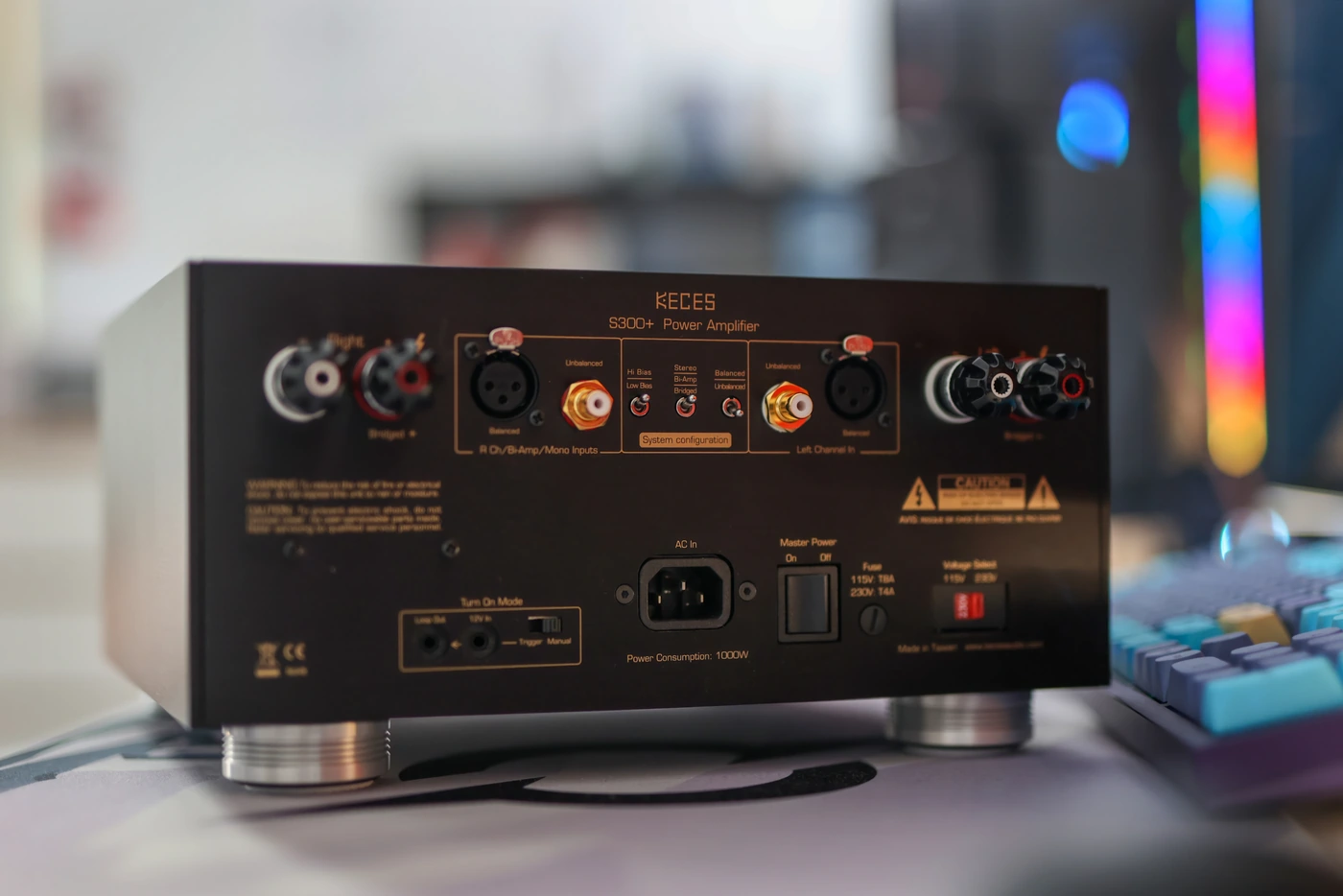
Keces S300+ & KLH Model Five (3499 USD + 2499 USD) – Model Five is a heavily underrated speaker set that you really can’t believe sounds so clean, modern, dynamic and punchy unless you’re powering them properly. Keces adds just that extra bit of drive, power and punch needed to actually move the low-end bass driver of the Model Five, and the sound is much punchier, yet tighter, cleaner yet more expressive than I’ve ever heard them sound, with a soundstage that extends wider and goes further than any other setup I had the honor to play in my room to this date. It helps that I have Model Five set higher than recommended, as they reach my ears perfectly, and I get that crisp, clean presentation, while they sound open and well separated. The bass extension S300+ gives to Model five is insane, they reach 30 Hz, the bass driver can really move if you power well enough, while the treble is refined, bright, open and airy, with a perfect timbre and clarity. This is a pair of speakers that brought tears to my eyes while exploring sadder songs countless times while writing this review, allowing me to really explore what can be done with two high-performance products.
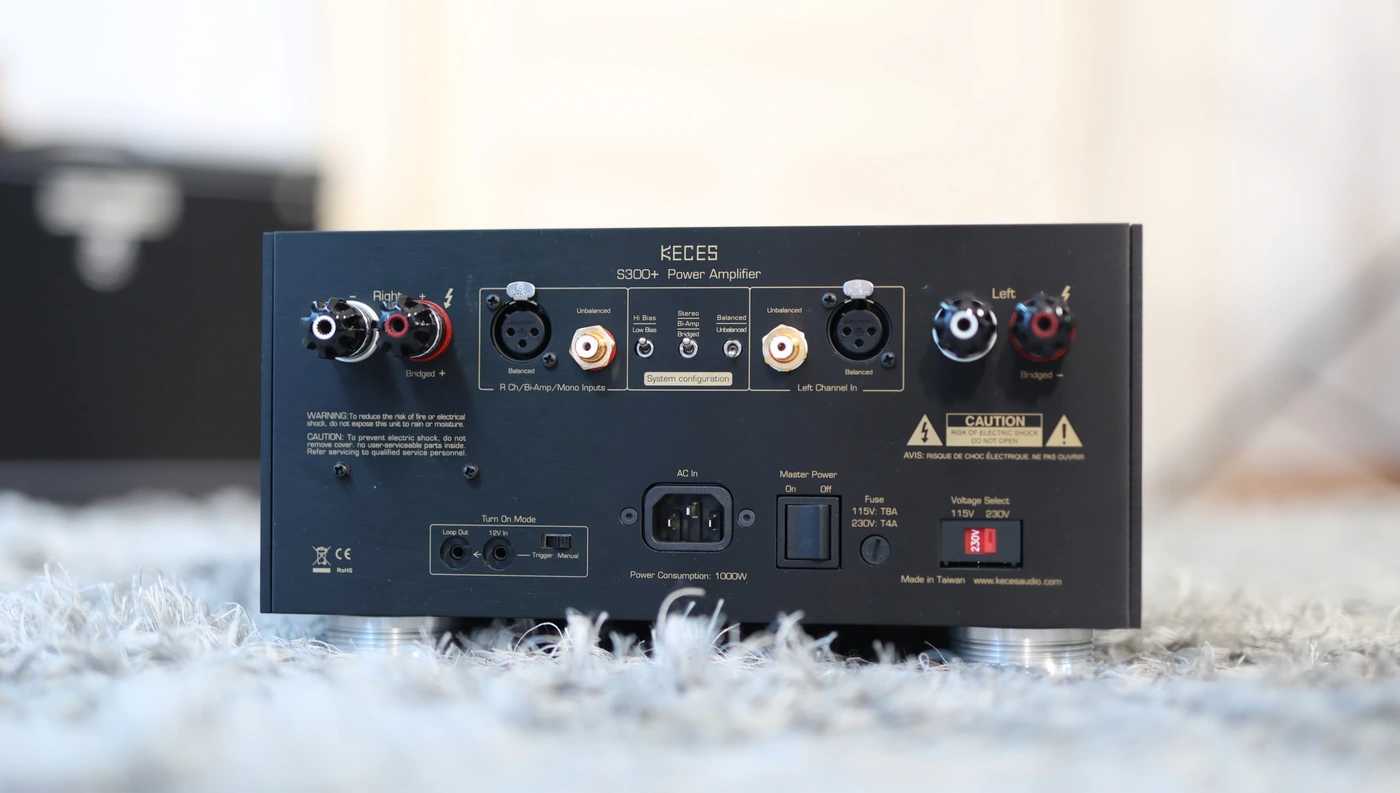
Keces S300+ & Amphion Argon3s (3499 USD + 3000 USD) – Here, the pairing works really well if you want to get a wider, more holographic soundstage from the Argon3S, which are known to sound rather intimate and tightly packed together, so S300+ will help enlarge the soundstage, separate instruments better, but also keep the beautiful voicing that Argon3S has for both male and female voices, improve on the overall clarity they have compared to most amplifiers I tested with them. The sound is dynamic, punchy, detailed and clean, with exceptional impact in the low end, and thanks to the complex woofer arrangement, we have more bass depth and better nuance, but still a tighter and more pleasing presentation than with most other amplifiers driving those speakers.
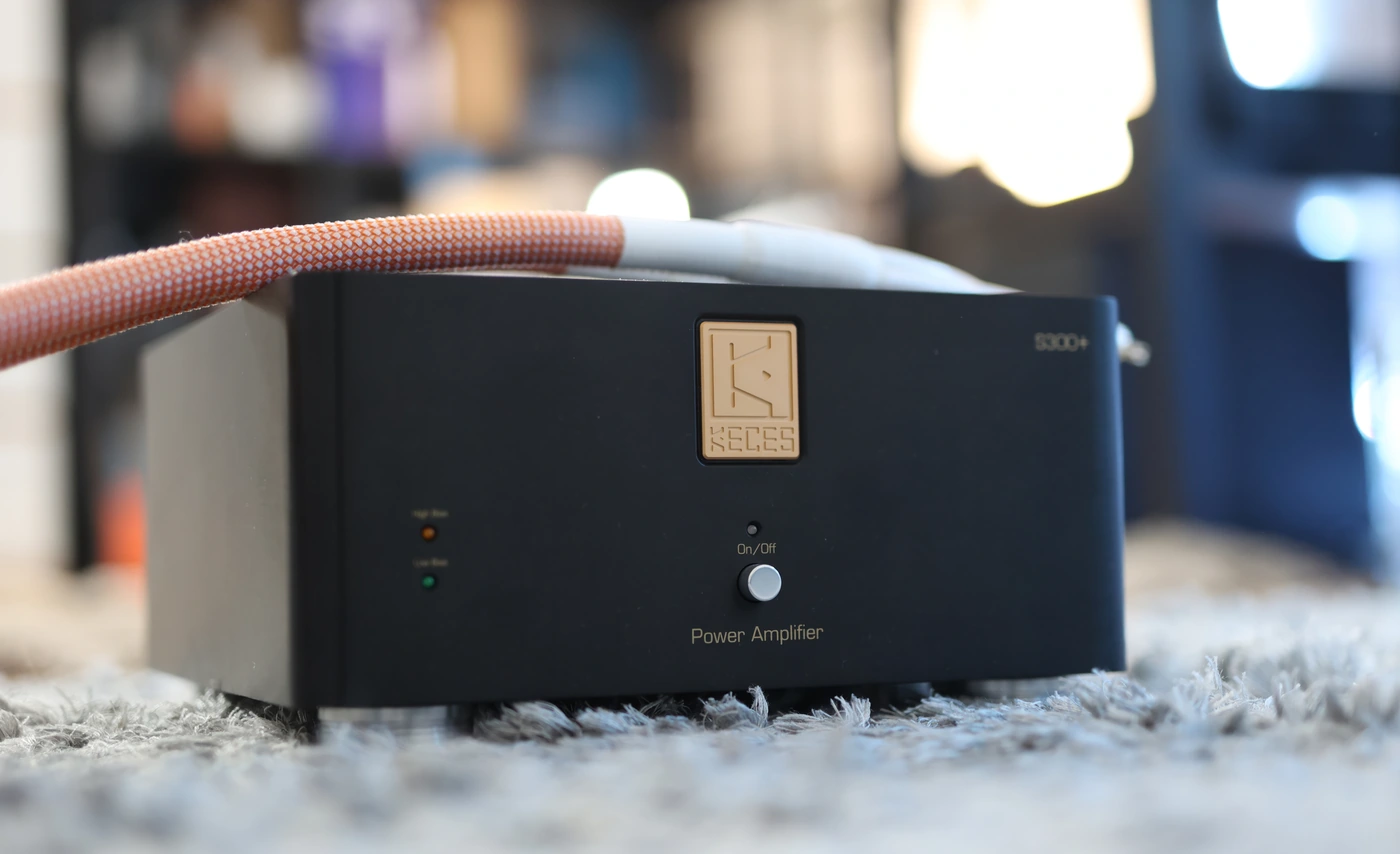
Keces S300+ & NHT C3 (3499 USD + 1249 USD) – NHT C3 shops the biggest changes to their sound when powered adequately, from Keces S300+, as usually they sound natural and pleasing, but not uber special, just a natural clean sound, but with S300+ they become holographic, they dissolve and disappear from my mind as a listener, the sound just happens and I’m immediately placed right in the center of the action, with each musical note coming to life right in the front of my ears. The dynamic range is insanely high, although the way S300+ is transparent at all times, you will hear if your music is compressed or not, and music which is compressed will sound loud, but you’ll still have exceptional instrument separation and definition, a soundscape that escapes your room and extends the places you didn’t know existed. The bass extension stops at the physical limits of the drivers NHT C3 have for bass, which is around 40Hz, but the bass is nuanced, all instruments have the correct amount of body, they are presented clear and well separated. Those are speakers that don’t cost enough to generally be recommended for S300+, but the pairing shows just how much performance you can squeeze out of high price / performance speakers, if you have a proper DAC and AMP.
Value and Conclusion
When it comes to the value, the $3499 USD price point might seem like a high point for a headphone user, where most DAC/AMPs top up at around 2000 USD, but for a speaker amplifier, Keces S300+ is actually not even very pricey, and for a Class A / AB unit, it is literally one of the most powerful, but heaviest, and most controlled, full and detailed sounding amplifiers on the market today. In fact, those statements remain true even if we exclude the price point from the discussion. Keces S300+ is a tank of an amplifier with more power than a mini nuclear reactor, and its value is incredibly high, if you need this kind of power. Even when you don’t have the need for it, the kind of control, punch and delivery it offers for any pair of speakers makes it a worthy investment.
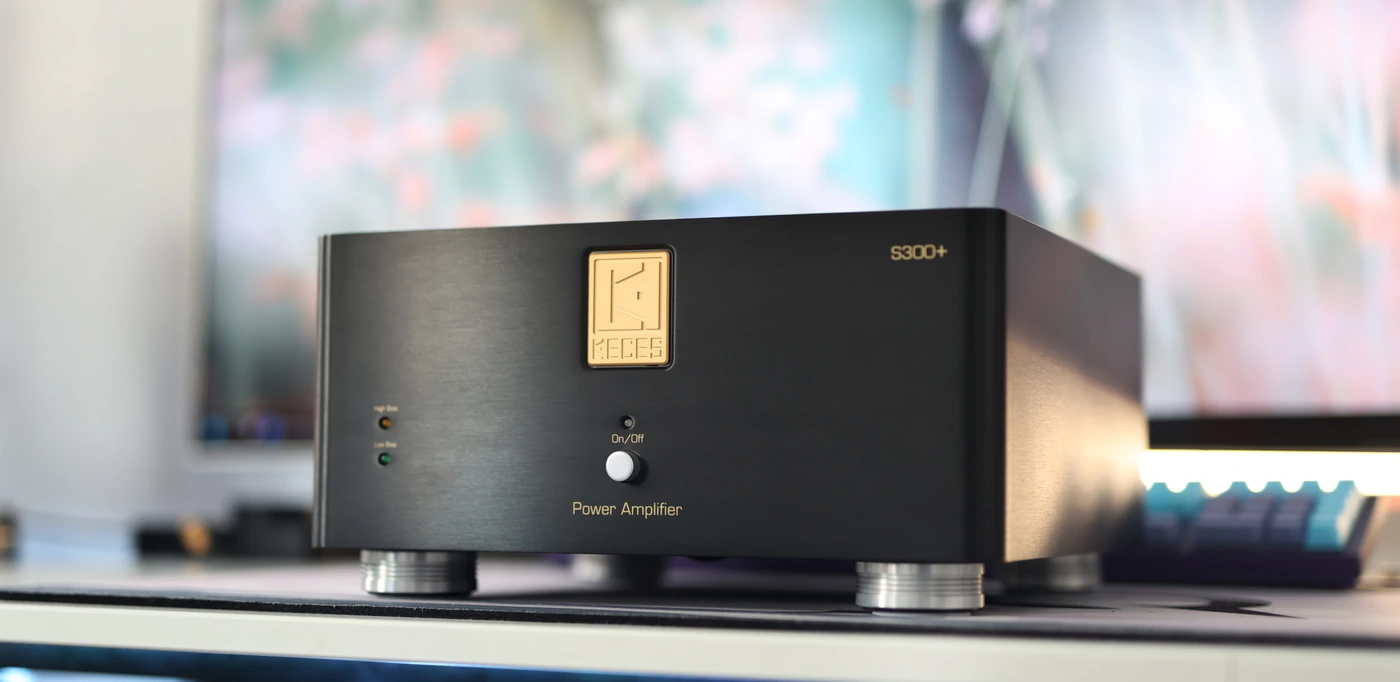
Before the end of today’s review I want to add Keces S300+ to the Audiophile-Heaven Hall Of Fame for its exceptional resolution, clarity, detail and control it has over all speakers out there, and for being the best sounding HIFI Stereo amplifier I heard to date, regardless of the price point. In fact, it has shown me that the best way to get a proper sound is with a passive set of speakers and a high-end DAC, and a high-end amplifier. For a really long time I’ve been stuck on the idea that an active speaker would be better, because everything is matched inside, so when testing a mere pair of NHT C3 driven by Keces S300+ and HIFIMAN x Golden Wave Serenade versus Adam Audio’s S3V, I was dumbfounded to hear that NHT c3 can outplay adam’s best speakers by a huge margin in speed, accuracy, resolution, clarity and overall impact, so thanks to S300+ I now understand why the audiophile way is the only way for musical enjoyment.
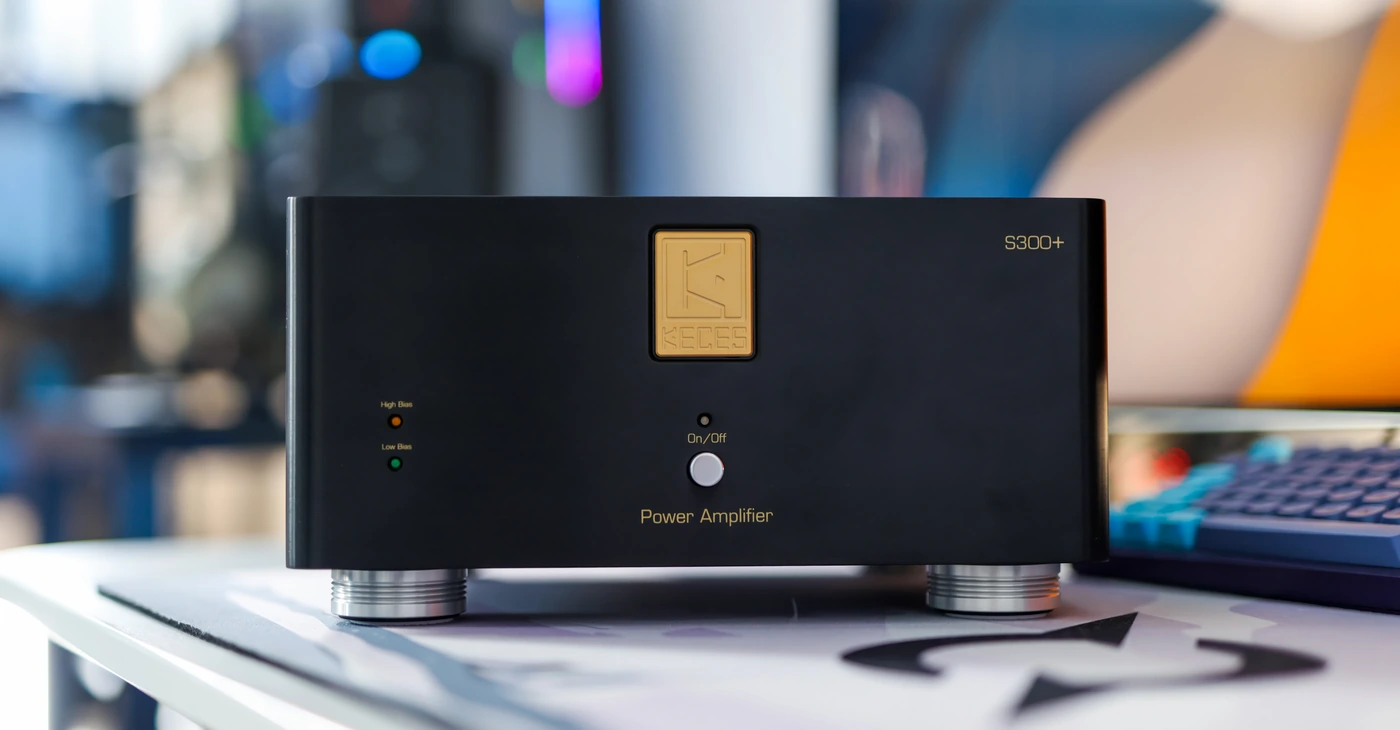
At the end of the day, if you’re looking for clean gain with very little coloration, for exceptional power delivery, absolutely no self noise, and for a solid unit that will never fail on you, Keces S300+ is a fully recommended purchase and an Amplifier I am happy to use daily in every stereo system I will be testing from now onwards.
Product Link
You can grab one from the official website here – https://www.kecesaudio.com/S300+.html
You can grab one from www.amazon.com here – https://amzn.to/3uyUtZy
If you’re in the UK, you can grab one from www.amazon.co.uk here – https://amzn.to/3witkuy
And if you’re from Europe, you can grab one from www.amazon.de here – https://amzn.to/3SW3Vzw
--- Please remember to stay safe, and always have fun while listening to music!---
- If you have a dime to spare, please donate, and help us! It would make the day brighter for me and my wife-
Full Playlist used for this review
We listened to more songs than those named in this playlist, but those are excellent for identifying a sonic signature. I recommend trying most of the songs from this playlist, especially if you’re searching for new music! The playlists are different for Spotify, Tidal and Youtube, and based on the songs I enjoy and are available on each!
https://www.youtube.com/playlist?list=PL_cjBXGmwSHSdGcwuc_bKbBDGHL4QvYBu
https://open.spotify.com/playlist/5J3oloz8Riy9LxEGenOjQ0?si=979ba4f082414be7
https://tidal.com/browse/playlist/330fd544-8e5b-4839-bd35-676b2edbb3d5
--- Contact Us ---





